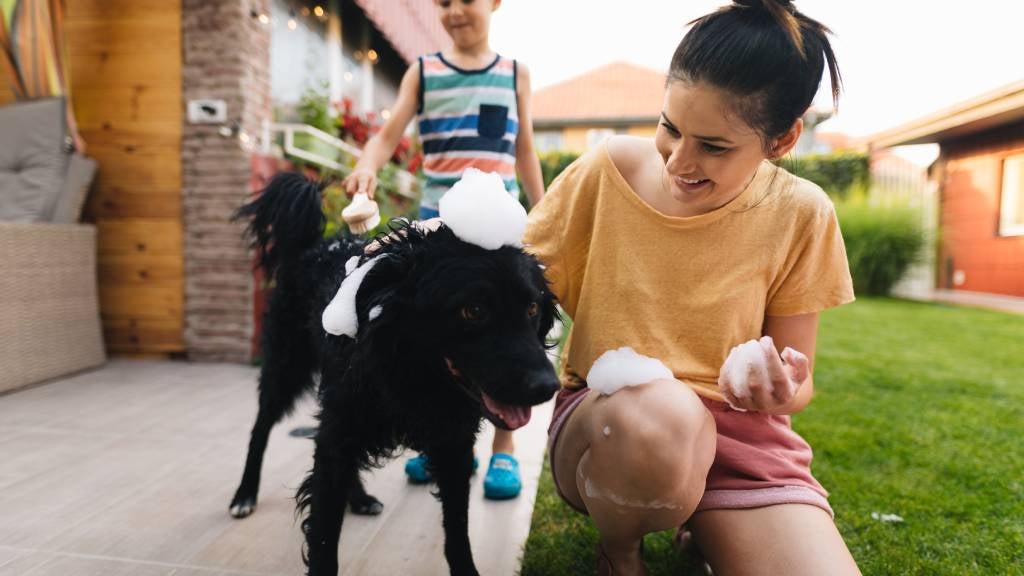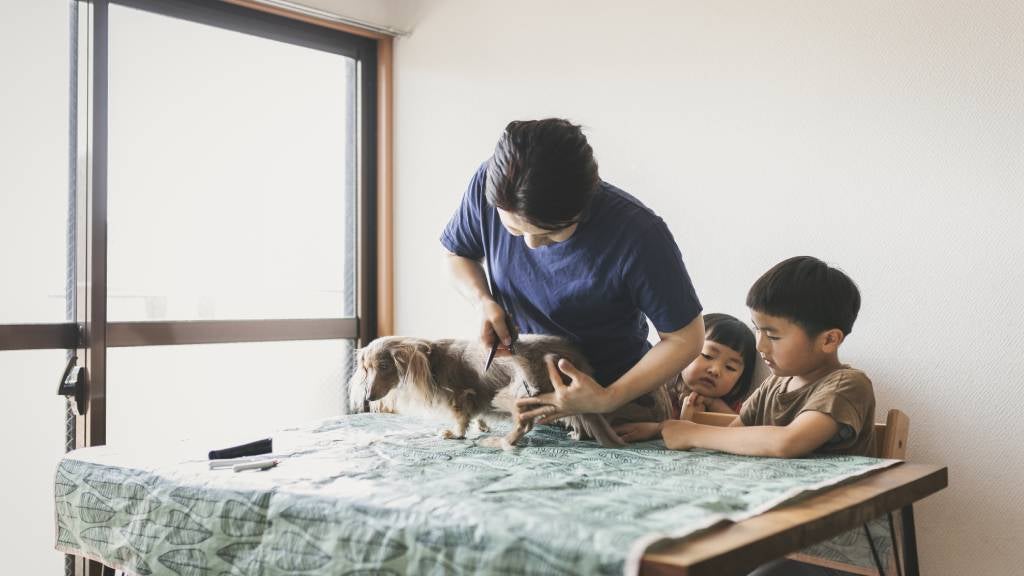Paw-fectly groomed: Pet grooming tips for families

Snuggling your dog or cat is one of the best feelings in the world, especially after they’ve just visited the groomer. Grooming pets is essential for their health and hygiene, but professional pet grooming can be costly. The good news is, it’s simple to do at home – here’s how.
Essential pet grooming tips for busy families
The easiest way to make your dog or cat comfortable is by establishing a routine for regular brushing and bathing, and rewarding them with treats. It’s best to start with short sessions and take breaks if they become stressed.
How to develop a consistent grooming routine for dogs
Regular brushing removes dirt, dead skin, hair, and knots from your dog’s coat. Use gentle strokes in the direction of the hair, being careful around sensitive areas, like the ears, nose and face, and checking for ticks and fleas. If your dog’s nails are touching the ground, you should trim the tip using animal nail clippers or a grinder.
How often you bathe your dog depends on their age, breed, activity level and coat – but definitely give them a bath if they become smelly or dirty. Use lukewarm water and dog shampoo, washing the head last. After rinsing, dry off as much moisture as you can with a large towel.
How to develop a consistent grooming routine for cats
While cats spend hours preening themselves, regular brushing helps prevent hairballs and spreads healthy oils around their skin and fur. While brushing, check your cat’s body for any wounds, or signs of fleas and ticks. Nail-trimming is recommended every couple of weeks – but only snip the white part of the claw, and don’t try to do all claws in one sitting.
Even though cats have their own grooming methods, your cat may need a bath if they get into something smelly or sticky. Place a non-slip mat in the sink or bathtub before filling it with a few inches of warm water. Use a gentle spray or pitcher to get your cat completely wet, carefully massaging cat shampoo into their coat from neck to tail, then rinse and dry them off with a towel.
Choose low maintenance pet breeds
Pet grooming will take different amounts of time depending on the breed. So when you have a busy lifestyle, it’s worth considering which is the right breed for you.
Low maintenance dog breeds
Breeds with short, thin coats generally require little grooming outside of weekly brushings and the occasional bath. Popular low-maintenance dog breeds include:
- Beagles
- Boxers
- Dobermans
- Great Danes
- Greyhounds
- Basset Hounds
- French Bulldogs
Low maintenance cat breeds
While cats with long hair should be brushed daily, short-haired breeds don’t shed much and rarely need grooming. Some low-maintenance cat breeds are:
- Bombay
- Burmese
- Tonkinese
- Cornish Rex
- Maine Coon
- Siamese
- British Shorthair

Without proper organisation, your pet grooming tools can quickly become lost among their toys, medications, and food. That’s why it’s a good idea to separate all your pet supplies into clearly labelled bins and baskets.
The trick is to keep often-used items where you most need them – for example, in the room where your pet is bathed. You could also create a portable pet grooming kit with shampoo, clippers, a brush, and towels, so it is easily accessible for outdoor grooming sessions as well.
Pay attention to ear and dental hygiene
Clean mouths and ears are essential to pet hygiene. All you need to do is gently wipe inside your dog or cat’s ears every few days with a damp cloth, checking for signs of infection like swelling, redness, or discharge.
The best way to care for your pet’s teeth is the same as your own – daily brushing. Use a special dog or cat-friendly toothbrush and toothpaste, keeping an eye out for discoloured teeth or swollen gums. Dental chews can also help floss your dog or cat’s teeth and scrape away tartar.
Pet insurance can assist with the costs associated with accidental injury or illness of your pet. Real Pet Insurance covers up to 80% of eligible vet bills, and you can claim up to a maximum of $12,000 per year. There are inclusions and exclusions depending on your policy, so please check your PDS carefully so you know what you are covered for. Find out more.
22 Aug 2023